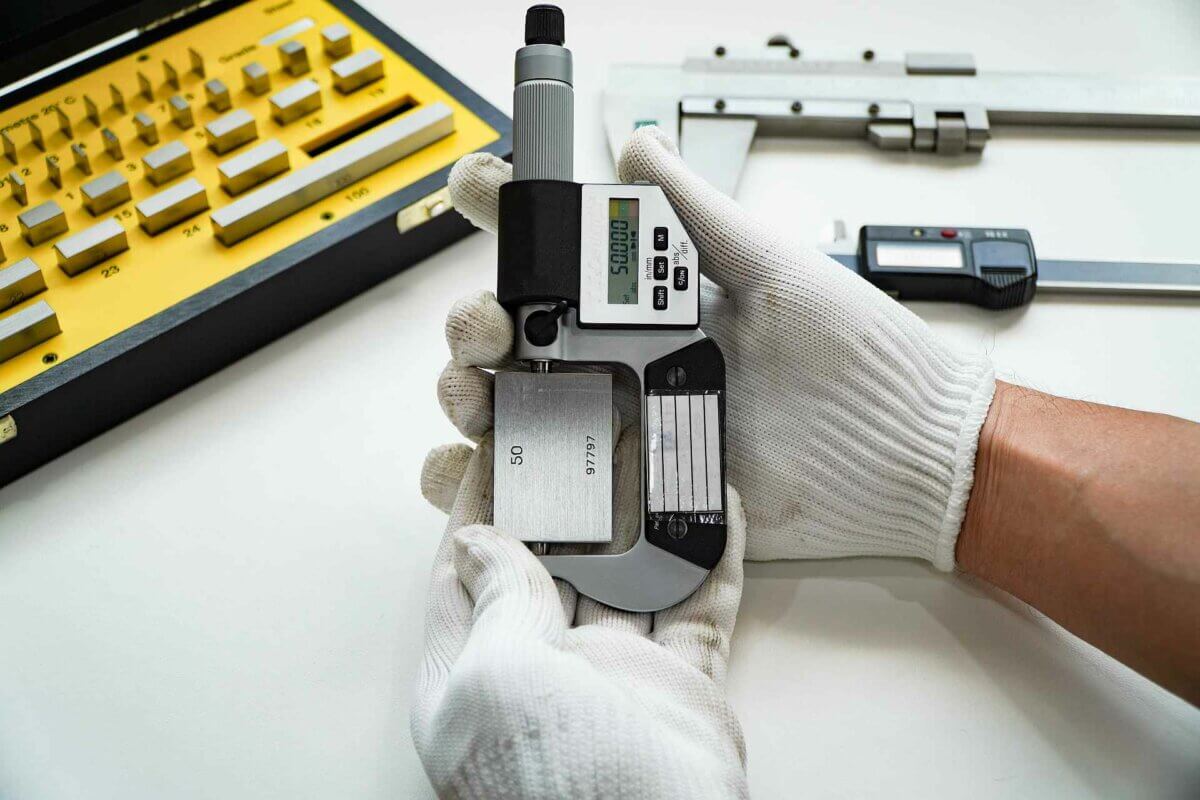At Topcraft Precision, we know that a fraction of a millimeter can mean the difference between a perfect part and costly rework. Micrometer readability isn’t just a detail, but the way to get dependable measurements in machining and inspection.
When micrometers are misread (even by a tiny margin) the consequences add up quickly. Out-of-spec parts may slip through, assemblies won’t fit, and entire batches could be scrapped. The good news? The right training and tools can reduce these errors. Let’s explore why micrometer clarity is so important and how Topcraft keeps measurements sharp.
The High Cost of Misreading a Micrometer
A micrometer is only as good as the person using it. Their accuracy is fundamental to upholding the tight tolerances required in modern component manufacturing. Misinterpretations happen more often than you might think, whether from parallax error (reading at an angle), misaligned thimble markings, or simple misplacement of the decimal point.
Common Problems from Misread Measurements
- Mismatched Components – A shaft that’s 0.05mm too large won’t fit its bearing, delaying production.
- Failed Quality Checks – Parts rejected for being out of tolerance mean wasted time and materials.
- Ripple Effects in Assembly – One undersized gear can throw off an entire mechanism.
In many applications, tolerances are razor-thin. A single misread micrometer can lead to expensive recalls or rework.
How the Right Training Reduces Errors
The best defense against measurement mistakes is training. At Topcraft, we:
1. Read Analog Micrometers Correctly
- Avoid Parallax Errors – Always view the scale straight on, not at an angle.
- Check Thimble Alignment – A slight twist can throw off readings by 0.01mm or more.
- Understand Vernier Scales – Some micrometers have extra markings for finer resolution.
2. Use Digital Micrometers for Clarity
Digital micrometers take away guesswork by displaying measurements clearly. Benefits include:
- No Misinterpretation – The number on the screen is unambiguous.
- Faster Readings – No need to decode tiny lines on a thimble.
- Data Recording – Some models store measurements (for traceability).
While digital tools help, they aren’t foolproof. Users still need to calibrate properly and apply pressure when measuring.
Topcraft’s Approach to Micrometer Accuracy
We don’t leave measurement integrity to chance. This philosophy of building in quality applies to our entire process, from automated poka-yoke systems to manual inspection. Here’s how we maintain confidence in every reading:
1. Regular Calibration Checks
Micrometers drift over time. We schedule frequent calibrations to confirm they stay within spec.
2. Cross-Verification with Multiple Tools
Critical dimensions are double-checked with height gauges, optical comparators, or CMMs when needed.
3. Employee Certification Programs
Our inspectors complete hands-on training to master both analog and digital micrometers before signing off on parts.
When Digital Micrometers Shine (And When Analog Still Holds Up)
While digital micrometers are easier to read, analog models still have their place:
Best for Digital:
- High-Volume Inspections – Faster readings speed up workflow.
- Low-Light Conditions – Backlit displays beat squinting at tiny lines.
- Audit Trails – Some models export data for quality records.
Where Analog Wins:
- Durability – No batteries to die mid-shift.
- Tactile Feedback – Experienced machinists “feel” measurements better with mechanical tools.
- Cost-Effectiveness – No electronics to fail or replace.
At Topcraft, we use both—choosing the right tool for each job.
Final Thoughts: Trust, But Verify
Micrometers offer quality in precision work. A misread measurement doesn’t just mean a bad part; it can mean lost time, money, and trust.
That’s why Topcraft Precision invests in training, calibration, and the right tools. Whether it’s a vintage analog micrometer or a digital model with extra features, we make sure every reading counts.
Need parts inspected with confidence? We measure up.

